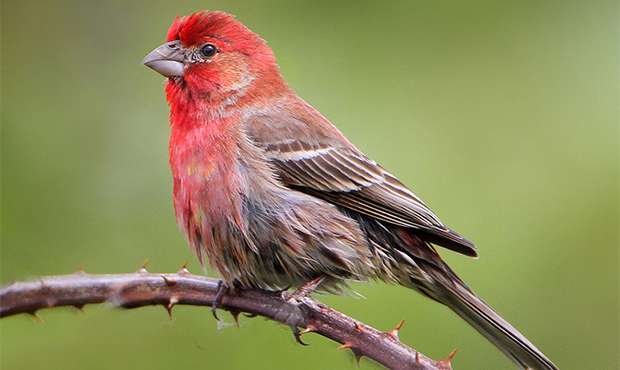Small birds almost overheat while feeding their young

For decades, researchers have thought that access to food determined the brood size of birds. Now, biologists at Lund University in Sweden have discovered a completely new explanation: the body temperature of small birds can increase by more than 4°C to exceed 45°C when they are feeding their young. Larger broods would require more work, resulting in even higher body temperatures—something the birds would probably not survive.
"A body temperature of over 45°C must be close to fatal even for small birds," says Jan-Åke Nilsson, professor at Lund University.
Small birds, passerines, normally have a body temperature of around 41°C. Jan-Åke Nilsson and his colleague Andreas Nord studied marsh tits, discovering that their body temperature increased considerably as they worked hard, for example when feeding their young.
Flying back and forth to the nest means they do not get the opportunity to get rid of excess heat, resulting in a higher body temperature.
In addition, the study shows that the tits' body temperature follows the surrounding temperature. When the weather is warm, the birds' body temperature increases.
"If the climate becomes warmer, it could make small birds more vulnerable. Warmer springs would force them to produce and raise fewer offspring because they cannot feed them as often without risking death," says Jan-Åke Nilsson.
The researchers conducted the study by manipulating the brood size of the tits, making the broods larger or smaller. This enabled them to increase the variation in how hard the birds were forced to work. When the parents returned to the nesting box, the researchers measured their body temperature.
"It is interesting to observe that the marsh tits' physiological systems worked even with fluctuations in temperature of the magnitude we have shown. Imagine how humans would feel if our body temperature increased by 4°C," concludes Jan-Åke Nilsson.
More information: Jan-Åke Nilsson et al. Testing the heat dissipation limit theory in a breeding passerine, Proceedings of the Royal Society B: Biological Sciences (2018).
Journal information: Proceedings of the Royal Society B
Provided by Lund University




















